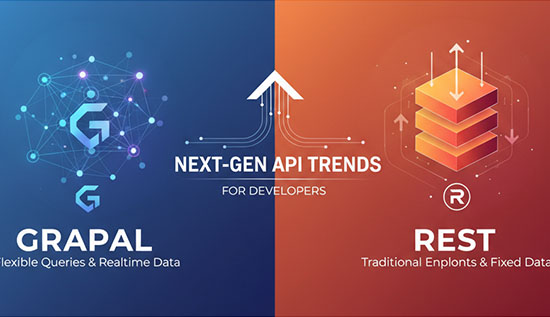Increase User Engagement with Cross-Platform Strategies

Learn cross-platform engagement strategies to strengthen consistency and boost user interaction across all digital channels.
Cross-platform engagement strategies help organizations keep their interactions smooth and consistent as people switch between devices and channels. Businesses can tailor content, improve retention, and create a single customer experience that encourages long-term loyalty by adopting multi-channel engagement techniques and cross-channel marketing strategies.
Companies need a strong digital engagement strategy that offers value at every point of contact since customers interact with them through apps, websites, social media, and email. This article talks about important tools, platform-independent strategies, and useful ways to get people to interact with your brand on more than one platform in a way that can be scaled up and is effective.
Understanding Cross-Platform Engagement Strategies Through Multi-Channel Engagement Tactics
The foundation of cross-platform engagement strategies lies in developing multi-channel engagement tactics that communicate consistently across all touchpoints. These tactics help brands coordinate messages, update content in real time, and ensure users receive relevant experiences regardless of the platform they choose. When multi-channel engagement tactics are properly implemented, they transform scattered interactions into a cohesive journey that enhances retention and user satisfaction.
Cross-platform engagement strategies become more effective when combined with targeted multi-channel engagement tactics that analyze user behavior data. Brands can observe how users move between platforms and adjust messages to match their expectations. For example, users may prefer social media for quick updates but rely on mobile apps for personalized interactions. Understanding these patterns ensures multi-channel engagement tactic strengthen brand visibility while supporting a consistent experience.
A step-by-step guide to cross-platform engagement strategies often begins by identifying core digital channels and mapping user behavior. Multi-channel engagement tactic help businesses locate gaps, duplicated content, or inconsistent messaging. These insights allow brands to build stronger customer journeys grounded in effective multi-platform engagement methods for apps and websites.
Cross-Channel Marketing for Cross-Platform Engagement
Building Cross-Platform Engagement Strategies with Cross-Channel Marketing Strategies
Cross-channel marketing strategies serve as a major pillar in the implementation of cross-platform engagement strategies. By aligning marketing efforts across all customer touchpoints, businesses can build stronger brand memories, boost content visibility, and reduce user drop-offs. Cross-channel marketing strategies help unify messaging, making it easier to support a cohesive digital engagement strategy.
Cross-platform engagement strategies require cross-channel marketing strategy that focus on user preferences. Instead of pushing the same content everywhere, brands use targeted communication that fits each platform’s behavior. This approach ensures users remain engaged without feeling overwhelmed or disconnected. Cross-channel marketing strategy also help organizations refine campaigns using real-time data collected from various channels.
To increase user engagement across multiple platforms, brands can integrate cross-channel marketing strategy with automation tools. These tools for cross-channel user engagement streamline updates and guarantee consistency. When platforms communicate with each other, users enjoy smoother transitions and are more likely to return, improving engagement and long-term loyalty.
Learn more: Benefits of Low-Code and No-Code Development Platforms
Why Platform-Agnostic Engagement Methods Strengthen Cross-Platform Strategies
Platform-agnostic engagement methods play a crucial role in helping brands deliver consistent, high-quality experiences across all digital environments. These methods allow businesses to engage users without limiting interactions to specific devices or channels, making them essential for strong cross-platform engagement strategies. Below are the key points that explain how platform-agnostic approaches strengthen overall engagement and provide deeper insights for searchers who want practical, actionable guidance.
Creating Flexible and Connected User Experiences
Brands can send messages, features, and content effortlessly across websites, apps, and other digital channels with platform-agnostic engagement strategies. This flexibility makes sure that users can switch between systems without losing progress or having problems. This method helps organizations contact more people and develop better cross-platform engagement strategies by getting rid of problems created by features or constraints that are only available on certain platforms.
Eliminating Barriers and Ensuring Seamless Interactions
The goal of these strategies is to make sure that user experiences feel the same no matter what device or interface they are using. Platform-agnostic engagement approaches assist keep interactions steady and predictable by getting rid of problems that come up because of different formatting, isolated systems, or technology that doesn't work with other technologies. This makes users more likely to interact with the brand on all platforms since they know they can count on the same performance and design.
Strengthening Consistency Through Multi-Platform Integration
To have the biggest effect, platform-agnostic engagement methods must be used with excellent multi-platform engagement methods for apps and websites. This integration makes sure that content is easy to find, users are recognized, and engagement patterns stay the same on all channels. When marketers apply this integrated strategy, they make user journeys that are easy to foresee. This makes people feel more comfortable, builds trust, and encourages long-term involvement across many digital venues.
Improving User Engagement Across Platform Through Omnichannel Engagement Techniques
Omnichannel engagement techniques are a key part of effective cross-platform engagement across platforms strategies. They help organizations give customers smooth, linked, and personalized experiences on all of their digital touchpoints. People often jump between devices, channels, and platforms, so businesses need to make sure that every contact feels the same and consistent. Omnichannel engagement approaches make this feasible by syncing user data, making things easier, and helping customers move smoothly from one step to the next.
Creating a Unified and Seamless User Journey
Omnichannel engagement approaches make all digital touchpoints, like websites, applications, email, social media, and more, work together to make one fluid experience. This lets customers switch across platforms without any problems, which helps marketers improve customization, lower friction, and keep interactions consistent throughout the trip.
Aligning Engagement with Real User Behavior
These methods look at how users switch devices and change how they interact with each other based on what they do in real time. For instance, if a person starts shopping on a laptop and finishes on a mobile app, omnichannel engagement approaches make sure the switch goes smoothly and nothing is lost.
Using Tools to Strengthen Omnichannel Execution
Companies need solutions for cross-channel user engagement in order to deploy omnichannel engagement approaches successfully. These technologies keep track of actions, make sure changes are in sync, and help with multi-channel engagement strategies. They assist brands improve user experiences across all platforms by giving them consistent analytics that support cross-platform engagement strategy.
Creating a Strong Digital Engagement Strategy for Cross-Platform Engagement
A solid digital engagement plan shows you how to use cross-platform engagement tactics. This approach comprises choosing the right technology, preparing content, measuring performance, and doing user research. Brands risk sending mixed messages and using a lot of different ways to communicate with customers if they don't have a digital engagement plan.
Cross-platform engagement strategies are a part of a digital engagement plan that show how users interact with content on different platforms. To make sure the framework is thorough and long-lasting, the strategy needs to include cross-channel marketing tactics, platform-agnostic engagement approaches, and omnichannel engagement procedures. With a defined plan, the brand can keep users interested on all platforms while also changing to fit how users are changing.
A digital engagement strategy should also incorporate effective multi-platform engagement methods for apps and websites. These methods ensure each platform delivers value while staying consistent with the wider user experience. Brands can use a step-by-step guide to cross-platform engagement strategy to implement new techniques carefully, ensuring smooth execution and measurable results. This digital engagement strategy also supports how to increase user engagement across multiple platforms by focusing on long-term user satisfaction and loyalty.
Tools for Cross-Channel User Engagement Supporting Cross-Platform Engagement
Tools for cross-channel user engagement play a vital role in helping brands execute strong cross-platform engagement strategy. As users interact through multiple devices and channels, businesses need systems that can automate tasks, track behaviors, and support consistent communications. These tools provide the structure companies need to manage multi-channel engagement tactics effectively and improve user experiences across every touchpoint. Below are the essential points that explain how these tools enhance engagement and support long-term digital growth.
Enhancing Efficiency Through Automation and Real-Time Tracking
Cross-channel user engagement tools help firms automate procedures, keep an eye on user interactions, and get real-time information. Automation cuts down on the amount of work that needs to be done by hand, and real-time tracking lets marketers see how users interact with content on different platforms. This combination makes multi-channel engagement strategies work far better by making sure that every communication is current and relevant.
Supporting Cross-Channel Marketing Strategies with Integrated Systems
CRM systems, marketing automation tools, analytics dashboards, and customization engines are all important parts of platforms. These tools make sure that communications are in sync and that users have the same experiences no matter where they are. They make cross-channel marketing campaigns stronger and make it easier to work together across platforms by putting all user data and engagement metrics in one place.
Improving Strategy Execution Through Testing and Optimization
Brands can employ cross-channel user engagement solutions to follow a step-by-step roadmap to cross-platform engagement strategy more effectively. These technologies let teams try out alternative ways to get people to use apps and websites on several platforms, look at the outcomes, and change their plans as needed. This ongoing process of testing and improving makes the overall digital engagement strategy better and makes sure that users stay engaged on all platforms.
Practical Examples of Effective Multi-Platform Engagement Methods for Apps and Websites
Effective multi-platform engagement methods for apps and websites demonstrate how brands can apply cross-platform engagement strategies in real-world scenarios. These methods include consistent branding, synchronized notifications, interactive content, and personalized recommendations. When combined with multi-channel engagement tactic, they help brands develop superior user experiences.
Apps and websites often serve as primary touchpoints, making strong integration essential. By using platform-agnostic engagement methods, brands ensure users can move from one interface to another without confusion. These effective multi-platform engagement methods for apps and websites can include features such as unified login systems, saved progress synchronization, and consistent navigation layouts.
Cross-channel marketing strategies further amplify these efforts, ensuring users receive relevant updates regardless of where they engage. Whether users access the brand through email, social media, or direct web visits, effective multi-platform engagement methods for apps and websites ensure smooth transitions. This strengthens user engagement across platforms and brings more reliability to cross-platform engagement strategy.
How to Increase User Engagement Across Platforms Using Strategic Approaches
Understanding how to increase user engagement across platforms requires a strong grasp of cross-platform engagement strategies. By combining multi-channel engagement tactics with omnichannel engagement techniques, brands create smooth and interactive experiences.
The first step in understanding how to increase user engagement across multiple platforms is analyzing user behavior. Brands must study user journeys and observe how users interact with various channels. The insights lead to better cross-platform engagement strategy and more accurate cross-channel marketing strategy.
Another major factor in how to increase user engagement across multiple platforms is the use of tools for cross-channel users’ engagement. These tools centralize data, automate responses, and support platform-agnostic engagement method. When combined with effective multi-platform engagement methods for apps and website, brands can deliver compelling experiences that retain users for the long term.
Conclusion
Cross-platform engagement strategies are essential for brands seeking long-term relevance in an increasingly fragmented digital environment. By combining multi-channel engagement tactic, cross-channel marketing strategy, platform-agnostic engagement methods, and omnichannel engagement techniques, companies can create seamless, personalized journeys across all digital touchpoints.
A strong digital engagement strategy supported by tools for cross-channel users engagement ensures every interaction is consistent and valuable. When executed properly, these methods reveal clear insights into how to increase user engagement across multiple platforms and strengthen brand loyalty through effective multi-platform engagement methods for apps and website.
Frequently Asked Questions
1. What are cross-platform engagement strategies?
Cross-platform engagement strategies are methods used to engage users across multiple digital platforms while keeping interactions consistent and personalized.
2. Why are multi-channel engagement tactics important?
multi-channel engagement tactics ensure users receive relevant information across platforms, helping brands maintain consistent messaging and higher retention.
3. How do cross-channel marketing strategies improve engagement?
Cross-channel marketing strategies align campaigns across platforms, ensuring users enjoy seamless transitions and well-coordinated content.
4. What are platform-agnostic engagement methods?
Platform-agnostic engagement methods allow brands to deliver consistent experiences regardless of device or platform, improving accessibility and user comfort.
5. How can I create a strong digital engagement strategy?
A strong digital engagement strategy requires understanding user behavior, aligning content across platforms, and using tools to automate and track engagement.
6. What tools help with cross-channel user engagement?
Tools include CRM systems, marketing automation platforms, analytics dashboards, and personalization software that synchronize data across platforms.
7. How do I increase user engagement across multiple platforms?
You can increase engagement by combining cross-platform engagement strategy with targeted content, consistent branding, and effective multi-platform engagement methods for apps and website.
More Articles
 20 Nov 2025
20 Nov 2025
GraphQL vs REST: Next-Gen API Trends for Developers
Compare GraphQL vs REST to optimize API performance, scalability and modern application design with best practices for developers.
 20 Nov 2025
20 Nov 2025
Neural Network Programming Beyond Python: Rust & C++
Experience neural network programming beyond Python, powered by Rust and C++ ecosystems built for speed, safety, and large-scale deployment.
 19 Nov 2025
19 Nov 2025
Swarm Robotics in Agriculture & Logistics: Smart Automation
Swarm Robotics in Agriculture & Logistics enhances automation, efficiency, and smart coordination across modern farming and logistics operations.
 19 Nov 2025
19 Nov 2025
Ultra-Low Latency Networks for VR/AR: Optimized Performance
🚀 Discover how Ultra-Low Latency Networks for VR/AR are transforming real-time experiences with 5G, edge computing, and seamless data transmission.